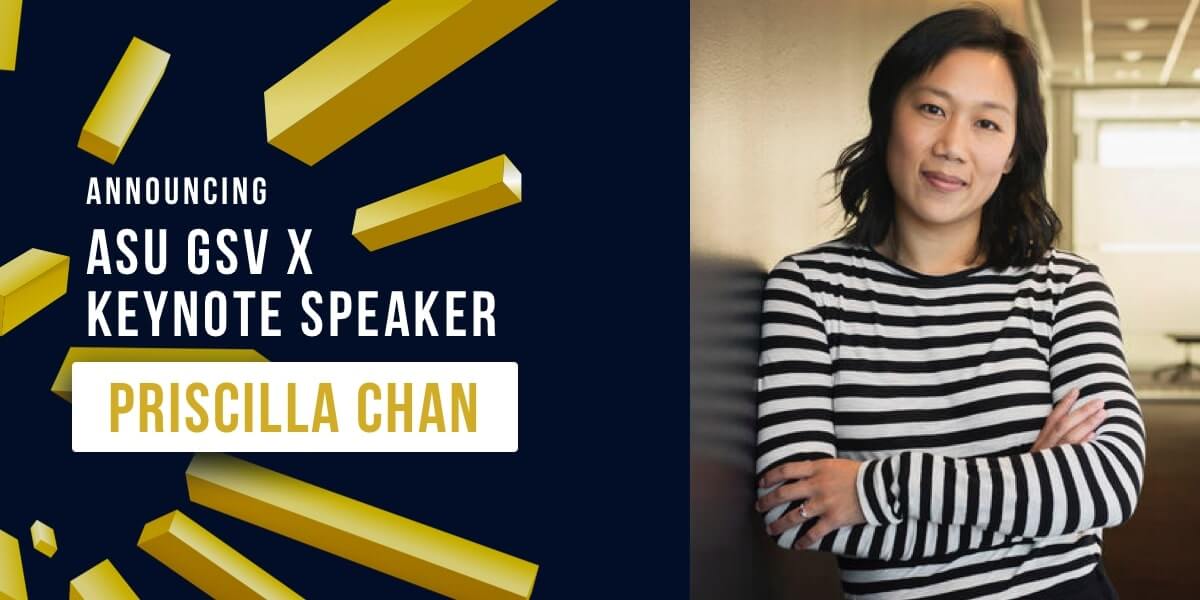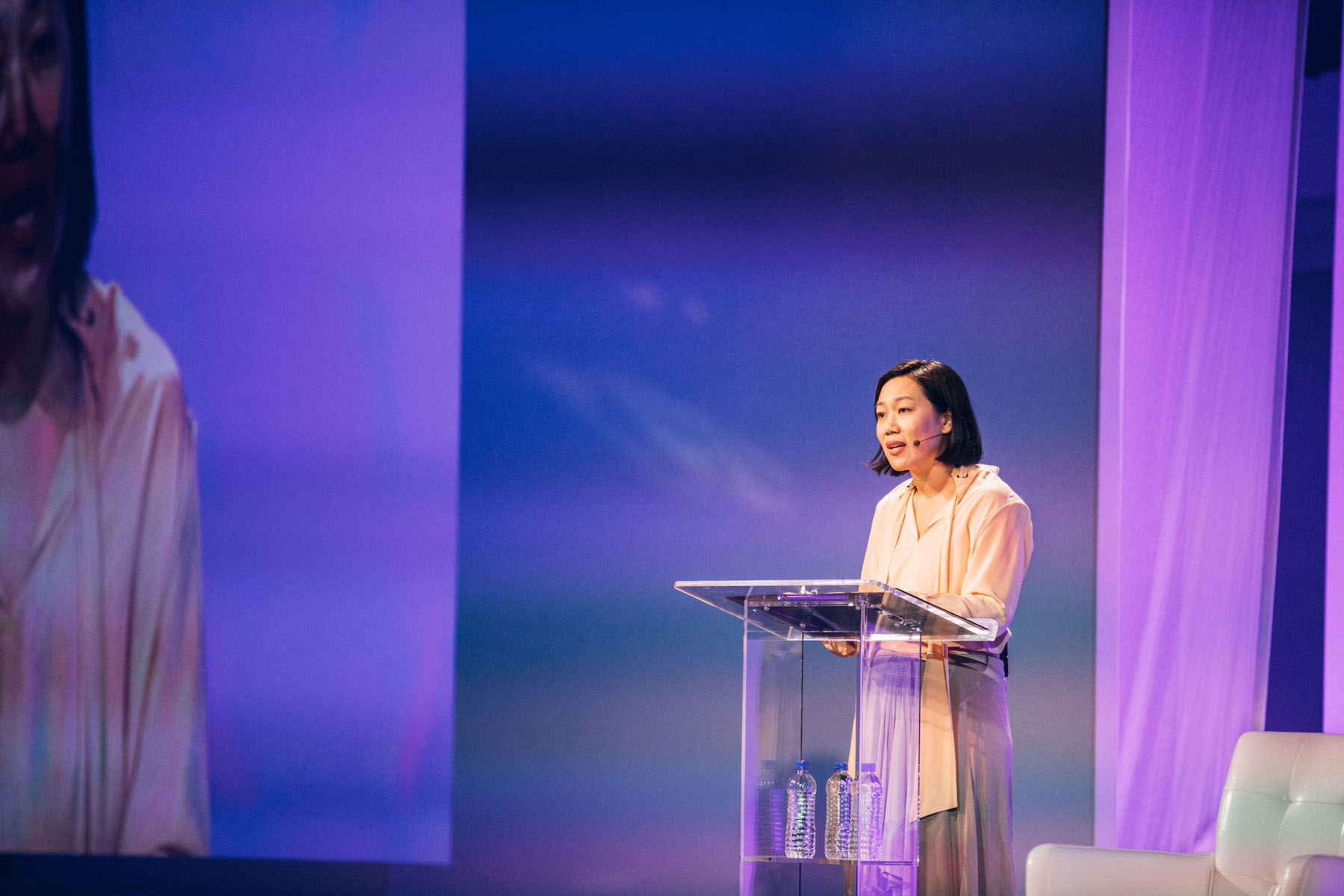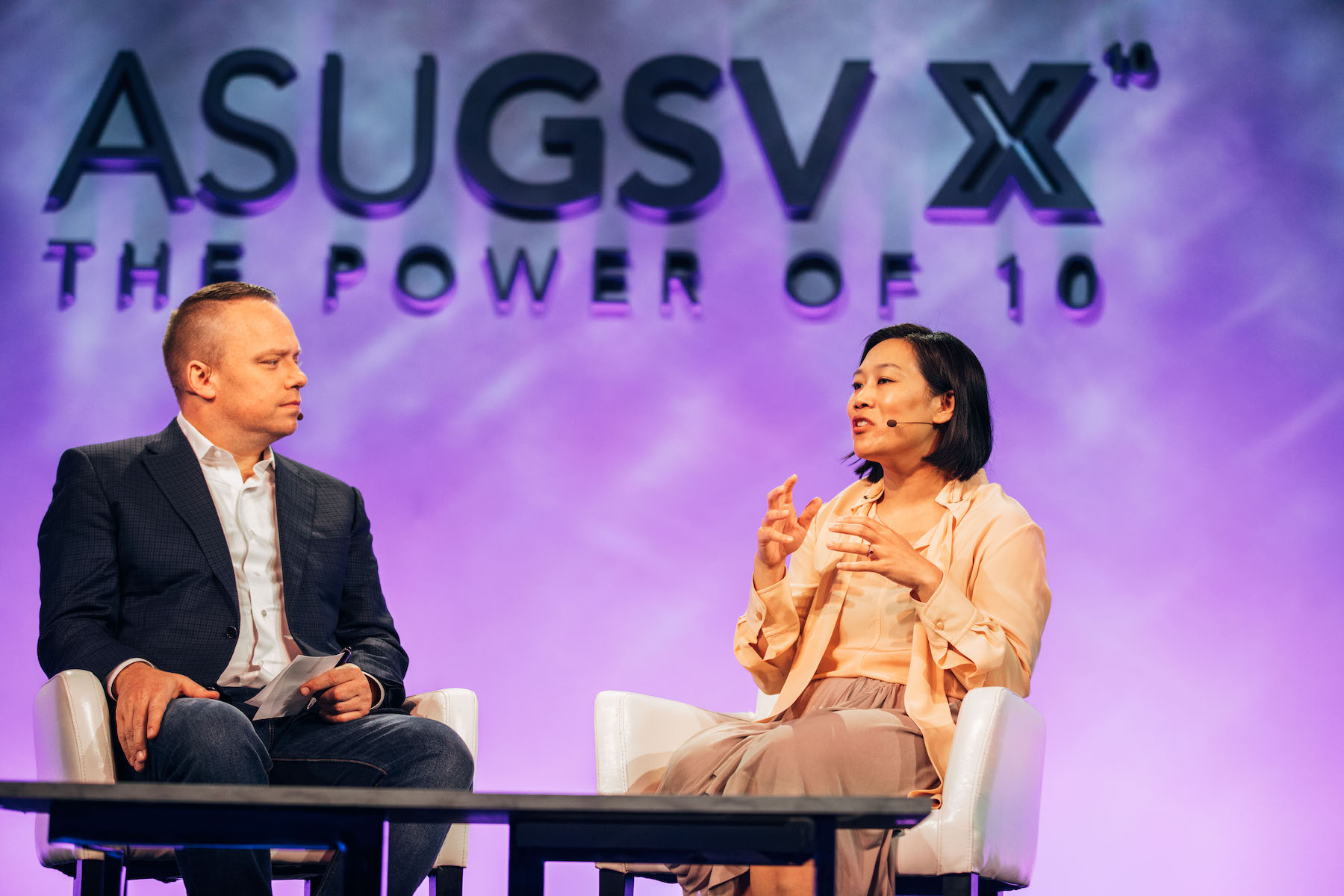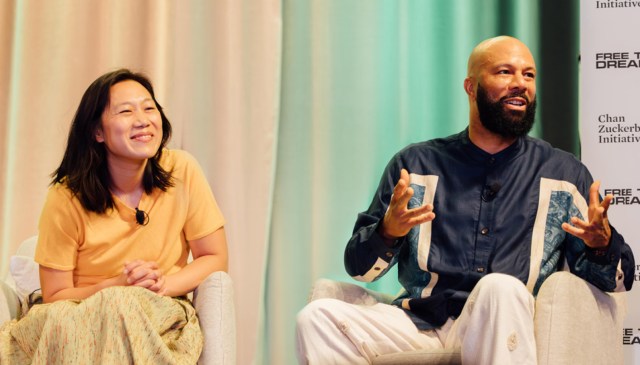Apr 9, 2019 · 15 min read
Priscilla Chan’s Remarks at the ASU GSV Summit
Today, Chan Zuckerberg Initiative (CZI) Co-founder and Co-CEO Priscilla Chan spoke to a crowd of over 1,200 education and tech leaders at the annual Arizona State University and Global Silicon Valley (ASU GSV) Summit in San Diego. She spoke about how her experiences as a teacher and pediatrician shaped her perspective and informed CZI’s mission to ensure that every student —not just a lucky few—can get an education that’s tailored to their individual needs and supports every aspect of their development.
Here are her remarks as prepared for delivery:
Bringing the Whole Child to the Classroom
A good education can change a kid’s life. I know, because it changed mine.
My parents came to the U.S. as refugees from Vietnam. They had almost no English skills or money. Growing up, my first job was to be a translator for my family at age 6. As a teenager my job was working the front desk at the restaurant they were eventually able to open. Always, always, I knew that I was an outsider. Kids bullied me. I worried constantly that my family might not have enough money to get by.
But I know that in so many ways, I was also fortunate. I could see a doctor when I got sick. I went to good public schools. I had teachers, like Mr. Long and Mr. Swanson, who really cared about me and showed me how I could succeed — in class, on the tennis court, in robotics club.
When they first came to this country, my parents couldn’t possibly have imagined that their daughter would one day go to Harvard. Or stand on a stage like this one. And I have never stopped feeling lucky. Because my story is the exception, not the rule.To work in education is to be confronted every single day by the fact that so many of our kids will never have a fair shot in life. Not even close. We’re all here because we want to change that. And I’m here because I want to do my part.
At the Chan Zuckerberg Initiative — or, as we call it, CZI — our education work is focused on ensuring that every student — not just a lucky few — can get an education that allows them to reach their full potential. We believe this starts with taking a ‘whole child’ approach to learning — in short, expanding the definition of student success beyond academic achievement to include a student’s physical, mental, social, and emotional needs as well. And we believe this must be informed by the science of learning — what we know about how students learn.
We’ve been so inspired by the educators, researchers, engineers, social workers, doctors, and others who have been on the frontlines of this work for decades — who’ve told us why they believe in these approaches too. But I want to start by telling you why I believe in it.

When I was in college, I was a tutor in a low-income housing development called Franklin Hill, in the town right next to where I grew up. I saw myself in these elementary schoolers. They didn’t have a lot. And you could tell that they felt different, apart. They were outsiders just like me. But they didn’t have the kind of support that I did. Despite their smarts, their spark, their incredible resilience, they didn’t have teachers recommending them for special programs or telling them that they were headed to college. I wanted to make sure these kids had someone in their corner. I wanted to be that person.
One day, one of the girls I tutored had missed school for several days, so I tracked her down to ask her about it. “Where have you been?,” I said. As she opened her mouth to speak, I saw: two of her teeth had been knocked out. My heart sank. I had gotten it all wrong. How could I focus on attendance and grades when I needed to focus on safety—maybe even on survival? And—more to the point—how could she? I thought: kids can’t get the education they need unless they’re healthy and safe. So, I became a primary care pediatrician to try to be part of the solution.
But again, once I was on the front lines, I saw just how complicated the problems really were. During my ER shifts, parents would bring their kids in for routine treatment at 1 or 2 in the morning. I wondered why. Then I realized that this was the only time when these parents weren’t working.I remember a young woman coming in with severe HIV symptoms. I asked her why she hadn’t been getting treatment. Turns out, it wasn’t because she didn’t want it. It was because every time she was abused by her foster family and ran away, she lost access to medical care.
As a tutor, I was trained to see kids as students. As a doctor, I was trained to see them as patients. But I saw that what we needed was a system that let me work with them as whole people — people with complex, messy, deeply interconnected challenges. Because the truth is, the things we think of as “different” aspects of child development — physical health, academic skills, mental health, social-emotional skills… they’re actually inextricably linked. And when any of them are left unaddressed, the challenges start to compound. You can’t learn multiplication tables if you’re hungry. Or if no one has figured out that you need glasses to see the board. Or if life has been so tenuous, so unsafe, that you don’t feel like you can raise your hand and ask for help.
Now, teachers have always known this to be true. But it can tempting to shy away from it, or maybe just de-emphasize it… because confronting it means we’re responsible for untangling this incredibly complex web of challenges. And that is really, really hard, especially for teachers. I know because as a former fourth and fifth grade science teacher, I’ve been there! Yet when we design our systems around this “whole child” approach to learning, and give teachers the support they need to really meet children’s needs so that kids at school feel not only challenged, but safe and healthy and cared for — the results can be incredible.
One study looked at what happens when at-risk kids get a mentor — someone who sees them not just as students to teach or patients to treat, but as whole people to support. Those students were 55% more likely to enroll in college… and 130% more likely to hold leadership positions. Another researcher looked at social-emotional skills, which are rarely prioritized in the classroom. He found that these skills are 10 times more predictive of long-term achievement than academics. Again, these approaches are not new. Teachers have always known that kids don’t learn in a vacuum, but they have not been given the right tools to meet the challenges they face every day. Pioneers like Maria Montessori — understood and acted on that knowledge. But in practice, the idea still remains somewhat revolutionary.
All of this got me asking: What if we based our schools on a better understanding of what actually helps kids learn? What if we invested as much in every aspect of kids’ development as we do in their academic progress?

I decided to start a school like that in East Palo Alto where more than 90 percent of students in the local school district qualify for free and reduced lunch. At the Primary School, teachers, parents, pediatricians, and mental health professionals all work together to give students the support they need to thrive. That support begins before kids ever enter a classroom. And it extends to families, who might be struggling to find housing or work or a way to put food on the table. It’s been just three years since the school opened, and already, we see how that holistic approach can make a huge difference.
Let me give just one example. Recently, there was a little girl at The Primary School who always slept past nap time, and started having big emotional outbursts in the classroom. You can guess how this might typically play out. Discipline the child. Email the parents. Hope for the best. But at The Primary School, the story played out differently. Teachers raised a flag, and then a parent coach talked with the student’s mother. It turned out she was experiencing homelessness, and her daughter didn’t have a good place to sleep. So the school stepped in to help. The girl got additional time to rest. She got help expressing her emotions. And her mom got connected to housing and employment resources that helped address the root problem.
We don’t sacrifice academic performance to do this. In fact, we’re seeing this work drive strong academic growth. In this program, kids are flourishing. Entire families are flourishing. Our hope is that eventually, what we learn at the Primary School will help other schools take on more of these approaches. But right now, for kids in East Palo Alto, going to the Primary School is still a stroke of luck. But that’s not okay. We are working towards a world where every child gets an education that gives them a fair shot.
Of course, we have a long road ahead of us. As you all know, America’s education system was designed in the 1800s — long before we knew much about child development. So it’s one-size-fits-all. Basically, we expect millions of kids to learn in the same way and move at the same pace. Some kids — like me — get lucky and do well in that system. Others get lucky and have parents who can afford to pay for a better system. But the kids who aren’t lucky… they struggle.
So, how do we change that?
I think the medical field actually offers a lot of wisdom here. Like in education, the stakes are impossibly high — life and death, and like in education, collaboration is tough. Researchers strive for clarity, but real lives are complex. Yet in medicine, the system ensures that advances in science make it into practice. But in education those linkages are often flimsy or broken.
In medicine, progress is never as fast as we want it to be. But over time, it accumulates. For so many diseases, it’s easier to fight them now than it was even five or ten years ago. That’s how much the field has advanced. How can we build a system that drives this kind of progress in education?
That’s our mission at CZI. And we see that mission as having two parts.
First, we help further and fund learning and child development science. We’re fortunate to have renowned experts like Dr. Bror Saxberg and Dr. Brooke Stafford-Brizard on our team at CZI. They ensure that our work is informed by an understanding of how children and their brains develop — which underpins the need to take a more holistic approach.
In many ways, schools know how much progress students should be making each year in math and in reading, which is critical. But sometimes those skills on their own don’t necessarily translate on their own to success in college or in the workforce. Cognitive skills, like attention, memory, and executive function; social-emotional skills, like stress management, resilience, and the ability to develop healthy relationships — these non-academic skills are critical, too. That’s why we’re supporting researchers at Yale and Tufts who are helping all of us better understand how students build these skills, from childhood through adolescence.
Second, we’re working with schools and teachers to put research like this into practice — and to help support new models that better meet the needs of the “whole child.” The truth is, we have not kept our schools up-to-date on the latest science about the techniques that really help kids learn. For example, although it’s pretty common for students to complete a big project and not get feedback on it until the unit is finished and the class has moved on — research tells us this is not a great way to learn.

A group of Maryland teachers we support worked to develop Neuroteach Global. It is an online tool that uses learning science principles like feedback and repetition to help teachers apply that science in their own classrooms and share with teachers everywhere.
You already heard me talk about the Primary School. Another example of a model that’s working is the Summit Learning Program — which now operates at close to 400 schools across the country. Summit’s goal is to empower teachers to better meet the individual needs of every student. Every Summit Learning classroom focuses on three key things: teaching through projects, developing lifelong learning skills, and cultivating deep relationships between students and their mentors.That last point is really important — because there’s a critique that because Summit uses software, it must plan to replace teachers with screens. Really, though, the opposite is true. Summit places enormous importance on the student-teacher relationship. Software tools are just a way to strengthen it.
We would never advocate for a world in which students sit alone at computer screens and technology takes the place of their teachers. Nothing can ever replace a teacher. And the use of technology to support student learning must always be done in a way that protects the privacy and security of their information.
But let me share an example of how Summit really works. When Summit teachers were starting out, they said it was tough to mentor so many kids in one classroom. Every student needed check-ins and reminders, and it could be hard to remember where each conversation left off. That’s when the teachers asked engineers and child development experts for help. The result was a software tool they built together. It helps teachers with schedule reminders about mentor check-ins and lets them keep track of their notes. Teachers can quickly gauge where a student is progressing, versus falling behind — and give feedback in real-time.
But don’t take my word for it — let’s hear from some of the teachers in the program:
Although the program is still young and improving, the early results are promising: The Pasadena Independent School District in Texas started piloting the Summit Learning Program in 2015. In two years, seventh graders who were furthest behind their peers made a 17 percentage point gain on the state math assessment — and a 20 percentage point gain in reading.
I’m also excited to see what a new wave of education-focused social entrepreneurs are bringing to the table — and many of you here today. Through our ventures work at CZI, for instance, we recently funded a company called Raise.Me. Their model is focused on offering micro-scholarships — to reward and incentivize student behaviors that will help them get into college and stay on track. About 40% of the students on Raise.Me are the first in their families to attend college. Through real-time feedback, mentoring, support, and guidance in the college admission process, they are helping more students see how their work connects to their hopes for the future.
Finally, there’s another school we work with called Valor Collegiate, in Tennessee. Valor was founded by twin brothers — an educator and a social worker. (Pretty convenient, right?!) They came together to build a school that teaches social and emotional development as rigorously as academics. One way Valor does that is through exercises called Circles. Circles happen once a week. They’re grounded in development science. And they are a structured, facilitated way to help kids build deeper relationships with their peers and develop social-emotional skills. And for those of you who think this sounds a little too touchy/feely: the results speak for themselves: Valor schools rank in the top 5% for academic achievement in Tennessee. And Valor Circles have now spread to more than 18,000 students nationwide.
New approaches and models like these are, almost always, born of collaboration. Not just between twin brothers… but between people from across the system who ask tough questions, discover new insights, and test new ideas — like so many of you here today .
I’m incredibly hopeful about what innovation can achieve in education. But I’m also realistic. As you well know, this work is tough. We certainly don’t have all the answers. Nothing about it is simple. Progress takes time. Straightforward successes are rare. (And there is no shortage of critics for any approach taken.) But those aren’t reasons not to try. They’re reasons to be bold, together. To establish that shared understanding that’s taken for granted in medicine: that we can and must get better. And that it’s everyone’s job to help make that happen.
I’m standing here today because of so many people who were passionate about supporting kids like me: the teachers who opened my mind to new ideas and showed me what was possible, the administrators who helped give me safe and healthy places to learn, and the people outside the school system who pushed it to be the best it could be.
In other words, I’m standing here today because people like you — were in my corner.
So, from the bottom of my heart, I want to thank you. Our kids — and our country — are better for what you do.





